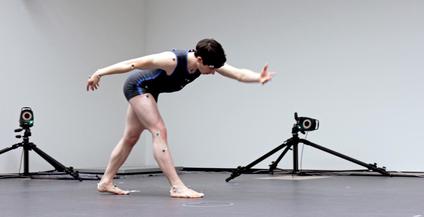A new study reveals: is it observation or explanation?
Dancing brings people happiness—the freedom of movement, the release of endorphins, the physical connection of dancing with a partner. How can a sequence of dance steps best be learned? “It has long been believed, both in terms of theory and practice, that patterns of movement are best learned by observation. We wanted to clarify whether this is really the case,” says Dr. Bettina Bläsing of Bielefeld University, one of the authors of a new study that answers the question.
The Experiment
18 dance students from the Palucca University of Dance learned two dance sequences – one first by visually observing a dance sequence, one first by listening to a set of verbal instructions.
In the first part of the experiment, participants were shown a video in which a dance sequence (dance phrase) was demonstrated, but given no verbal explanation. They were allowed to rewatch the video up to four times and practice the moves. Then, they had to perform the dance phrase, which was recorded on video. After this, they listened to spoken instructions for the same dance sequence, which were repeated twice, and performed again to show how well they had learned it. This was also recorded.
In the second part of the experiment, the order was changed. The study participants learned another new dance phrase, but this time they first received spoken instructions. They were allowed to hear these instructions up to five times and do a quick practice before performing. Afterwards they were allowed to watch a dancer demonstrating the phrase on video. The video was only shown to the dancers twice before they were asked to perform the dance again.
Ten days after the experiment, the students were suddenly requested, without any prior warning, to perform both of the dance sequences they had learned. “We wanted to know how well they could retain a pattern of dance movements over the long term,” explains Dr. Bläsing. This performance was also recorded on video.
The Results
In their evaluation of the video recordings, the researchers checked how thoroughly the dancer performed each respective phrase. The result: when a dancer learned the set of movements first by sight, later, they were better able to reproduce the dance than if they had initially been taught the dance by listening to spoken instructions. The students also performed the dance more cleanly when it was visually learned first.
A written questionnaire revealed that the students felt more sure of themselves when performing if they had learned the dance sequence mainly by observing it.
Who’s to say that last tidbit isn’t the key to better performance—confidence is key to performance, after all? The takeaway for non-dancers? You can learn by watching the couple with sweet moves at a wedding, then emulate! It’s as good as being told how to dance, after all.
Photo: Are dance moves learned better by watching a demonstration or listening to instructions? Using video and motion tracking recordings, researchers determined how well dance students could reproduce dance sequences taught with different instruction methods.Credit: Photo: German Association for Dance Medicine/Manuela Poß

